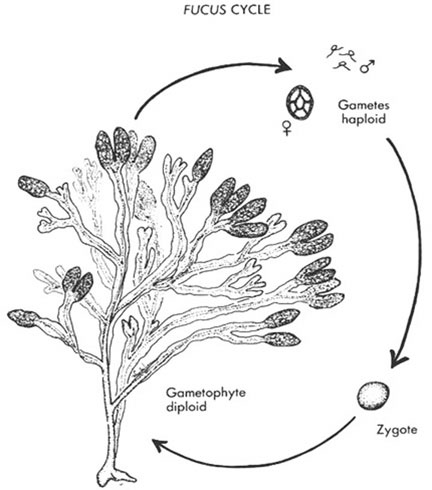 |
 |
|||||||||||||||
|
Reproduction in brown algae begins with the formation of receptacles found on the ends of the blades. There are separate male and female individuals within the population. The receptacles hold the gametes (gam-meets) or eggs or sperm and when stimulated, usually by temperature and a high tide, the algae release their gametes into the water. The gametes are left to meet for fertilization in the water and are brought together by the currents. The egg may also emit a chemical that attracts the sperm increasing the chances of meeting. A zygote (zye-goat) develops after fertilization and becomes a gametophyte that settles onto a solid surface. |
||||||||||||||||
What does it mean... |
||||||||||||||||
|
||||||||||||||||


